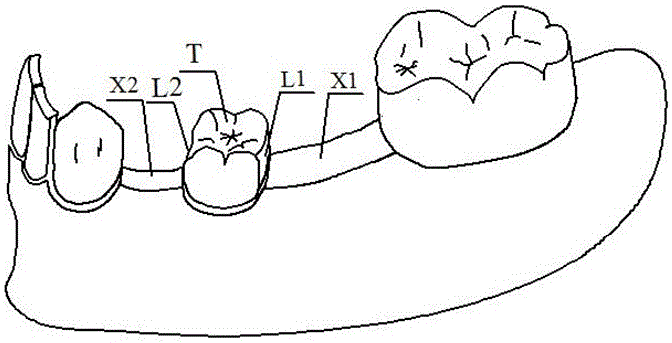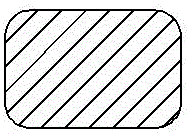Deciduous tooth interval loss space restoring and maintaining method
A technology for gaps and deciduous teeth, which is applied in the field of restoration and maintenance of gaps in the absence of deciduous teeth. It can solve problems such as missing deciduous teeth, discomfort in children, and malocclusion of teeth, and achieve the effects of softening strength, expanding gaps, and increasing the elasticity of arch wires.
- Summary
- Abstract
- Description
- Claims
- Application Information
AI Technical Summary
Problems solved by technology
Method used
Image
Examples
Embodiment Construction
[0027] The present invention will be further described below in conjunction with the embodiments and accompanying drawings. Clinically, the side of the tooth closer to the midline of the dental arch is called the mesial plane, and the side farther away from the midline of the dental arch is called the distal plane.
[0028] A space restoration and maintenance device for missing deciduous teeth (see figure 1 and figure 2), the device mainly includes a retention ring 1, a chute 2, and a main arch wire 3; Perforation, the front side wall of the chute 2 is provided with a retaining hook 4; the main arch wire 3 is sequentially composed of a moving rod 3s, a first U-shaped curve 3b, a longitudinal connecting rod 3f, and a second U-shaped cheek curve 3c from back to front. , the front bar 3m, the second U-shaped tongue 3d and the rear bar 3n; Perpendicular to the longitudinal connecting rod 3f, the front blocking rod 3m and the rear blocking rod 3n; the front blocking rod 3m and ...
PUM
 Login to View More
Login to View More Abstract
Description
Claims
Application Information
 Login to View More
Login to View More - R&D
- Intellectual Property
- Life Sciences
- Materials
- Tech Scout
- Unparalleled Data Quality
- Higher Quality Content
- 60% Fewer Hallucinations
Browse by: Latest US Patents, China's latest patents, Technical Efficacy Thesaurus, Application Domain, Technology Topic, Popular Technical Reports.
© 2025 PatSnap. All rights reserved.Legal|Privacy policy|Modern Slavery Act Transparency Statement|Sitemap|About US| Contact US: help@patsnap.com



